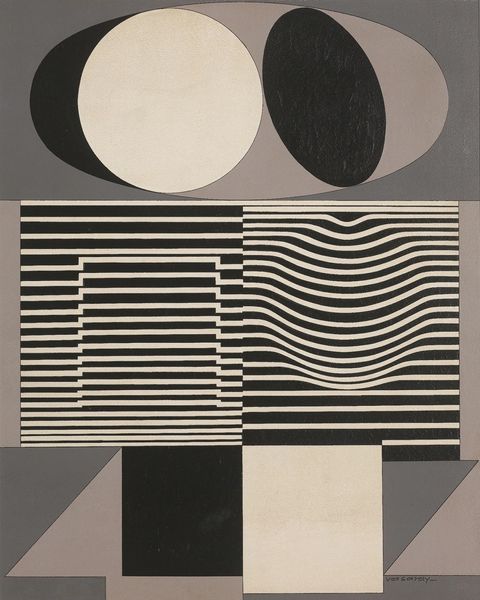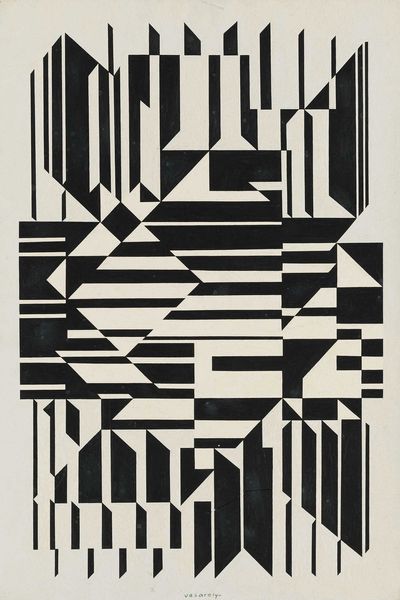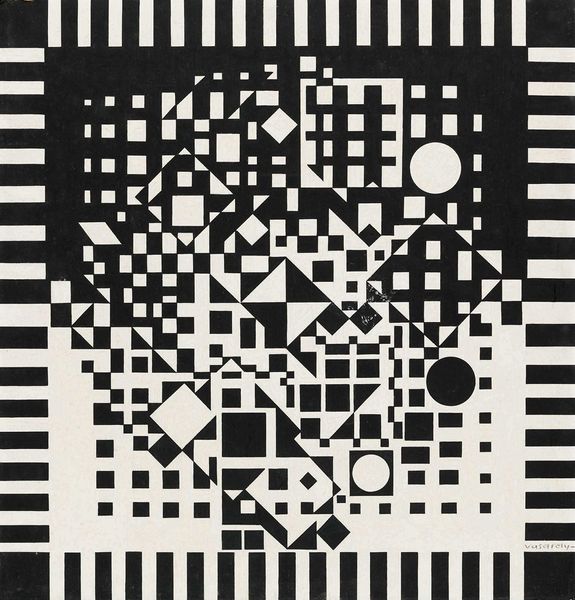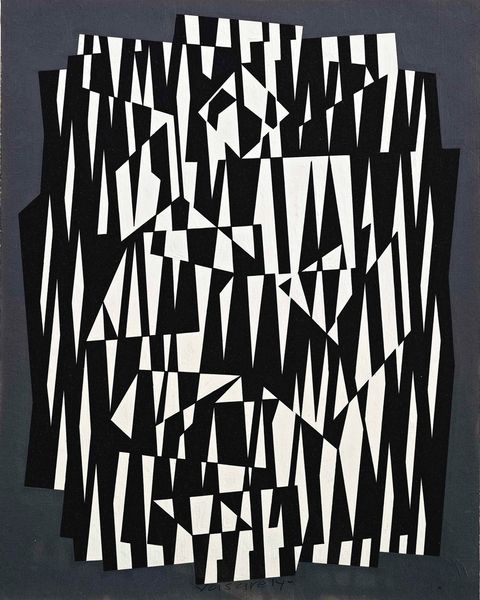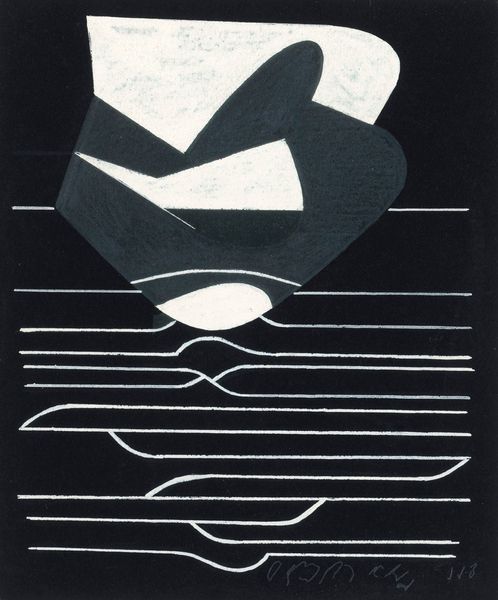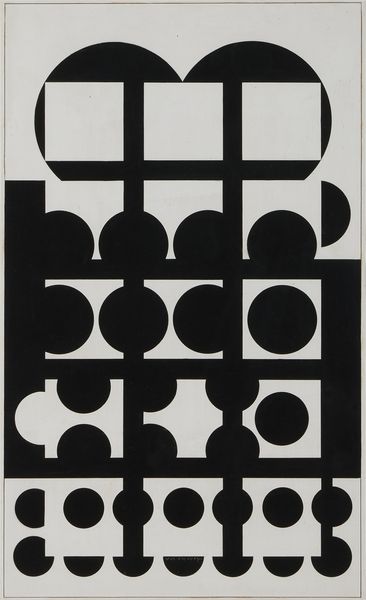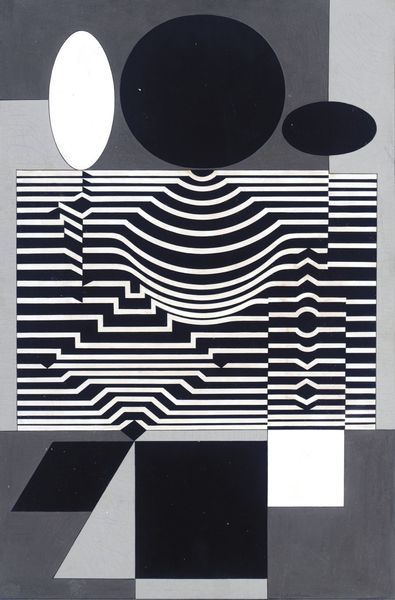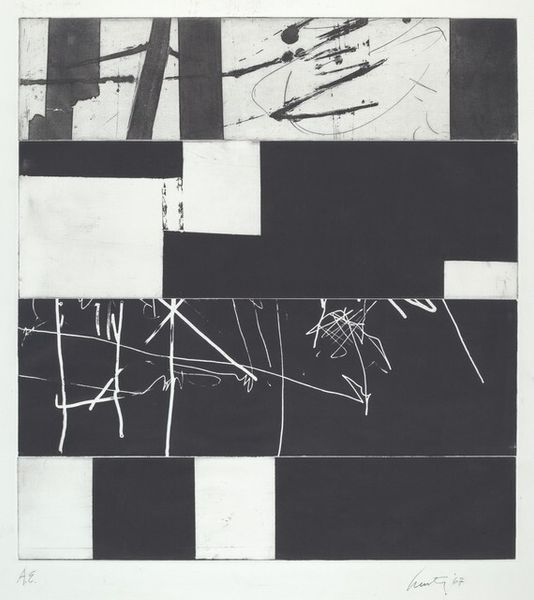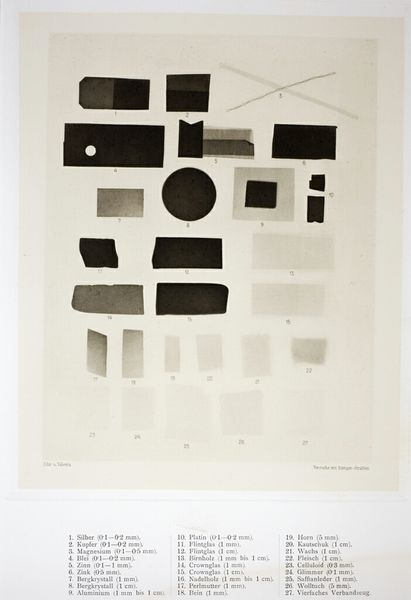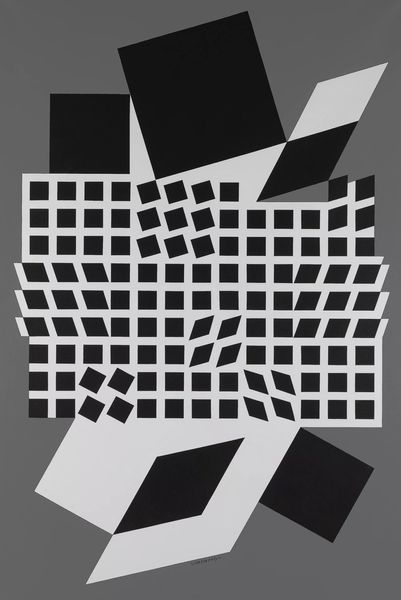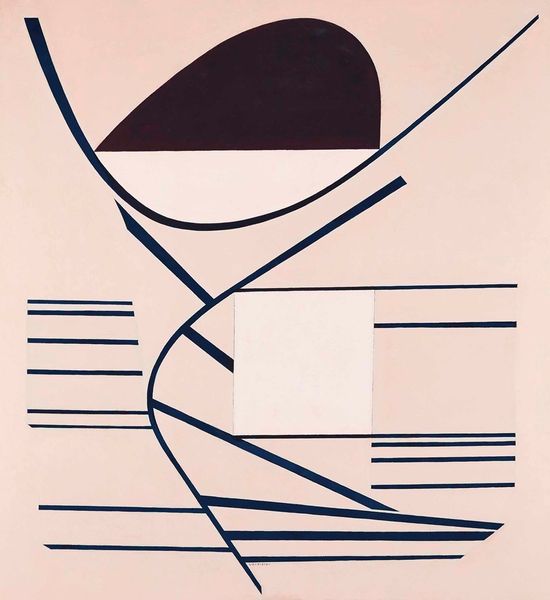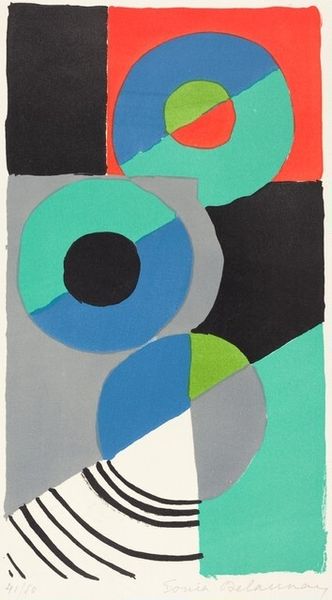
painting, acrylic-paint
#
op-art
#
painting
#
op art
#
acrylic-paint
#
abstract
#
geometric pattern
#
geometric
#
modernism
Copyright: Modern Artists: Artvee
Curator: Welcome. Before us hangs Victor Vasarely's 1957 acrylic on canvas painting, "Dobogoko." Editor: It's immediately striking. Stark contrasts of black and white; a bold, almost aggressive interplay of geometric forms. There is a palpable tension that emanates from the piece. Curator: Note how Vasarely masterfully employs shape, line and spatial relationships. Circles ascend from the lower register and reappear above, seemingly transformed by their interaction with a zone of angular abstraction. The organization operates under clear, discernible rules. Editor: But it isn’t simply about sterile formalism, is it? Considering this was created in the mid-20th century, when conversations about visual perception and its manipulation were coming to the fore, "Dobogoko" strikes me as a critical engagement. The starkness, the almost dizzying arrangement of shapes, feel almost like a challenge to our conditioned ways of seeing and understanding order, which is quite interesting when considering Vasarely’s role in creating the op-art movement. Curator: Precisely! The oscillation between figure and ground forces the viewer to actively engage in visual processing. The composition demands a focused gaze. Editor: And what about its sociopolitical resonance? Black and white. Sharp juxtapositions. This piece subtly engages ideas about cultural polarity during the cold war era. There is also the conversation of identity – how social structures push us into pre-ordained shapes of existence. Does Vasarely comment about predetermination? Curator: That is a valid viewpoint. But looking at the lines, the positioning of forms and use of only two shades gives the work an analytical aura, devoid of emotion and commentary. Its power derives from purely optical elements that create this experience of a kinetic surface, questioning stability and perception above all else. Editor: I think we’re both drawn to different strengths of the work, and, hopefully, that illustrates the rich visual language the piece employs. I am inclined to suggest that “Dobogoko” leaves a powerful meditation on the state of things at the time. Curator: Yes. Whatever viewpoint you chose, there’s no question that Vasarely offers a robust experience in which form, perception, and, potentially, a call for societal awareness meet and coalesce.
Comments
No comments
Be the first to comment and join the conversation on the ultimate creative platform.
